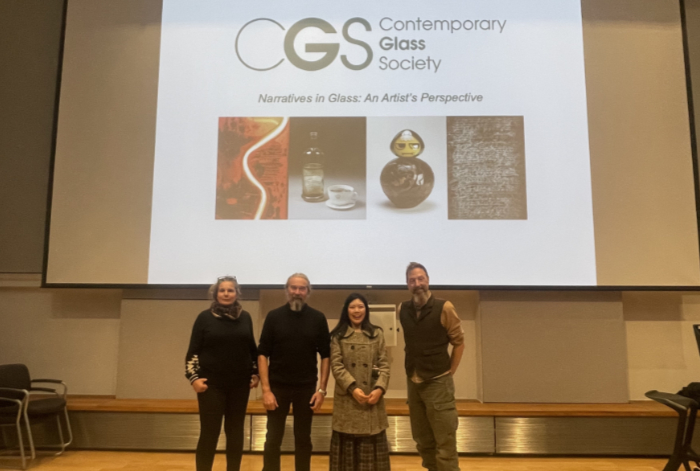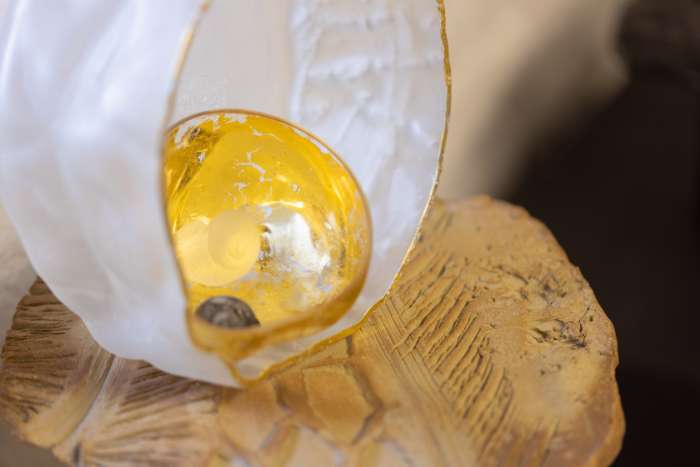
Artist residency review: Things we can know
Irish glass artist Fiona Byrne describes her experience as the first artist in residence at Farnham World Craft Town in Surrey, UK. From a studio at Farnham Maltings and with access to the glassmaking facilities at UCA Farnham, she had a month to research and create an artwork for the town.
Earlier in 2024 I was honoured to be the inaugural Farnham World Craft Town Artist in Residence, funded by the Farnham South Street Trust and managed by Farnham Town Council. The experience was pivotal for me in my artistic practice and will have long-lasting effects on how I make.
I work through sculptural and visual mediums to explore how we create and store knowledge. Delving into the idea of intelligence as an ecosystem that encompasses human and more-than-human nature, this thinking expands intelligence not just to plants and creatures, but also to materials and things. Informed by feminist theory, my work encourages relational and empathic ways of interacting with the world.

This relational approach is reflected in the ethos of The World Crafts Council’s ‘World Craft City Programme’, which was launched in 2014 in recognition of the pivotal roles played by local authorities, craftspeople and communities in cultural, economic and social development worldwide. It establishes a dynamic network of craft cities across the globe, aligning with the principles of the creative economy. Farnham is England’s first World Craft Town.
The residency was well organised by the Farnham Town Council team – particularly Pippa Hufton, who was my liaison for the programme. Prior to the placement, we agreed the scope of the activities and what materials, facilities and contacts I would need for the month-long opportunity. A month is not long to get to know a new place and create an artwork to leave behind, but I decided I would use this tight time frame to structure the residency.
Education and outreach have always been a big part of what I do, having worked in museums, galleries, universities and government bodies over the years, facilitating experiences with other people’s art practices. I wanted to bring my expertise in this area into my artwork in a more embedded way. This was the perfect opportunity to design a self-contained engagement, which responded to the town and its people.
On arriving in Farnham, I was really touched by the welcome I received, along with a warm reception from the Mayor. I was put in contact with many local creatives, given places to visit, set up with a display at the New Ashgate Gallery and brought on a tour of the Farnham Pottery. But it wasn’t all socialising! Once I was settled into my studio at the Farnham Maltings and inducted into the excellent facilities at UCA Farnham, I began to test ideas.
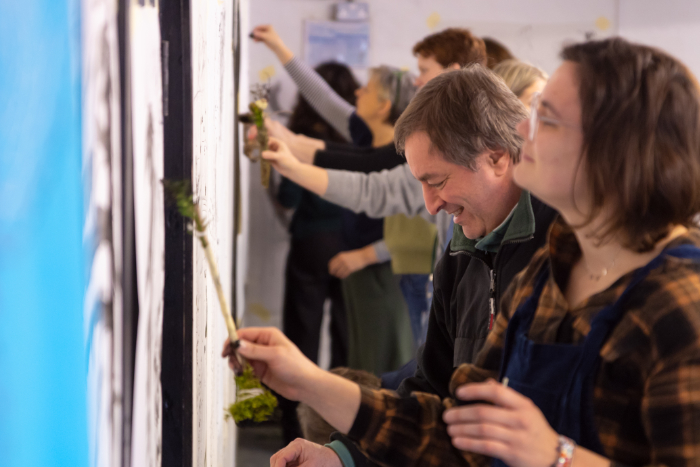
At the start of week two I facilitated a workshop. This would form the basis of the work I was to make at Farnham. The workshop involved a group of local makers. We considered the ecosystem of making, discussing how materials, tools, space and people come together to form collective intelligence. By creating tools from materials we gathered from the area, learning to use these tools and sharing this knowledge within the group, a co-operative series of sketches in clay and paper was produced.
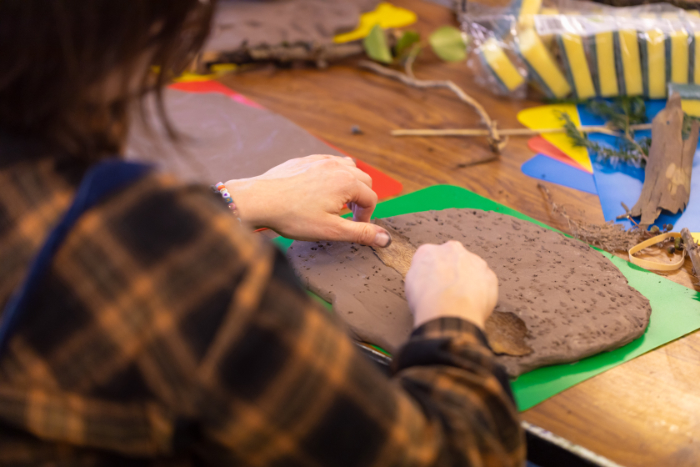
These formed the basis of a series of experiments in the workshops, where I was creating pieces that could be assembled into final works. The process was fast and, to be honest, a little exhausting and scary. I knew how I wanted to create, but not what the result would be.
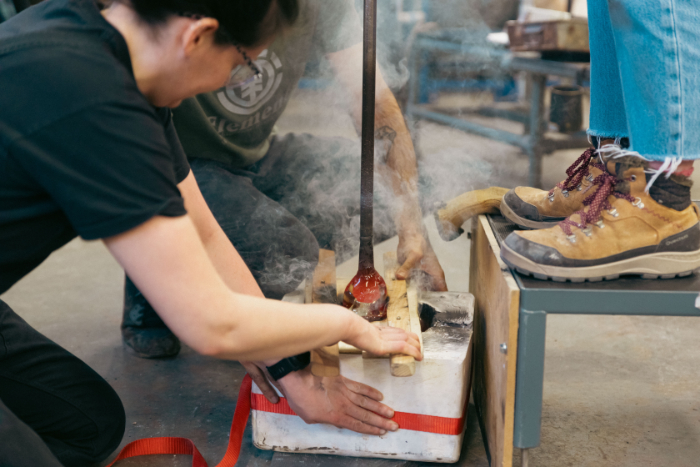
Translating the marks made on clay into glass, both directly, by blowing it molten into the clay, and indirectly, by making plaster moulds of the clay, I explored the visual language we had created in the workshop. Playing with scale, dimension and materials, the forms created reference Farnham’s cultural heritage, drawing inspiration from vernacular architecture, museum artefacts and the area’s industrial history of ceramics.
What exactly the pieces would be was unknown right up to the last night, when all the elements were brought together:thrown ceramic, blown glass, cold-worked pieces, cast glass, glazed tiles, drawings and tools from the workshop. For years I have been telling people in my classes to trust the process, but now I felt I was really pushing that trust.
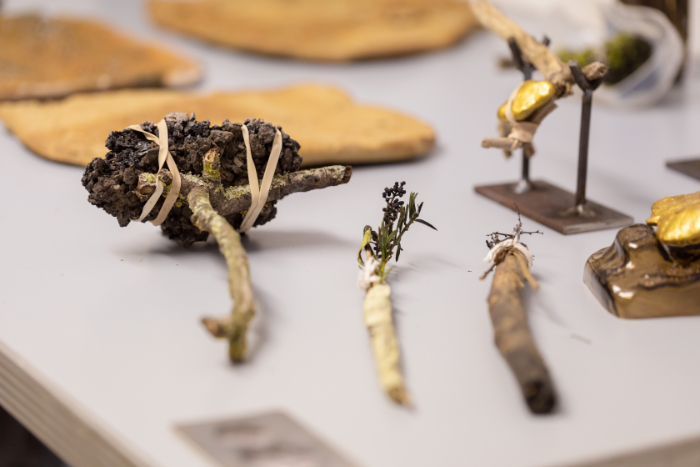
The day of the open studio, when I revealed the work, was nerve-wracking as I wasn’t sure how the collaborating makers would respond to how I had interpreted their input, or how the team from Farnham Craft Town would react to this new sculpture, which was very different to my previous work. But, for me, that was the joy – doing something completely new that I would never have made if I had not been in that place with the people I encountered. The work is a tangible representation of our collective knowledge and experience.
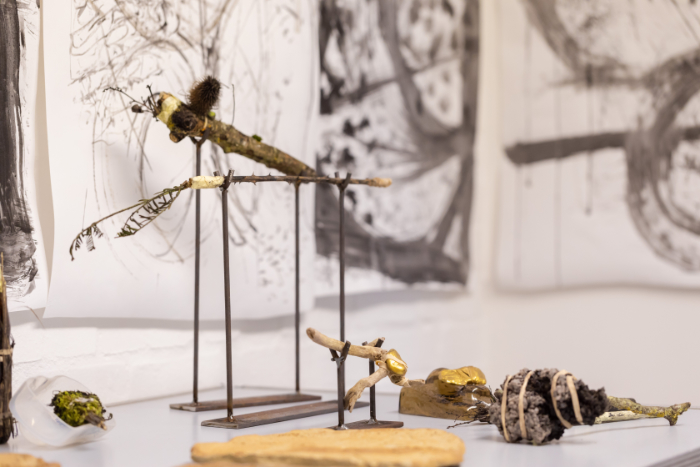
During the residency I exchanged skills with local makers, as well as the staff and students at UCA Farnham, trying out new techniques and experimenting to push my skills further. There were successes and losses in the process, yet all these learning experiences formed part of the thinking around the formation of the work.
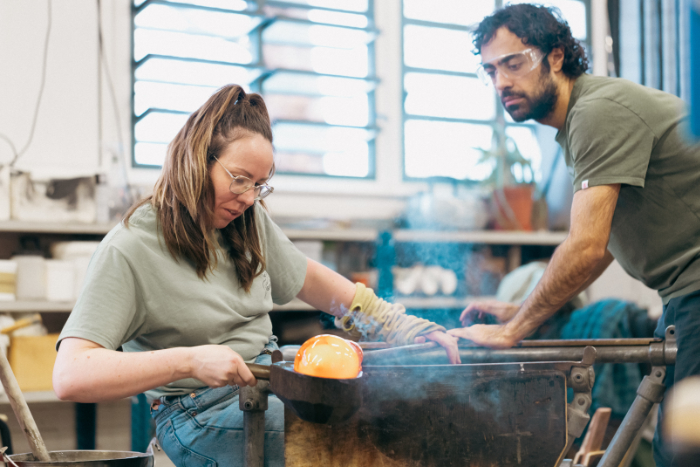
I titled the series ‘Things we can know’. The structure of ‘Things we can know’ means its final form is flexible; it is able to adapt and respond to its environment. It allows room for future curatorial choice and a re-formation of the presentation of the elements, enabling the works to absorb more collective knowledge as they continue to interact with the world.
I had enormous support during the residency, from the wonderful Teague family, who housed and fed me, to the expert professional assistance of UCA’s artists in residence Áine Ryan and Aria Kiani, to the staff across the Maltings, Farnham Town Council, UCA, the New Ashgate, the Craft Study Centre, Farnham Pottery, Pierrepont Farm and Farnham Museum. There are too many people to name here, but I am grateful to you all and my practice is richer for having learned from you.
I would highly recommend this experience to anyone thinking of applying to the programme. Applications for next year’s residency are open between June and August 2024 and will take place in Spring 2025. Find out more and apply here.
By Fiona Byrne
Read this video interview with Fiona, recorded by Seamus Flanagan.
Find out more about Fiona and her work via her website and follow her on Instagram.
Main feature image: Detail of glass bowl forms containing a snail shell and a cast glass snail shell set on a marked clay tile, made as part of ‘Things we can know’. Photo: Seamus Flanagan.
